Kodak 16mm helps to turn back time for François Ozon’s bittersweet romance 'Summer of 85' (Été 85)
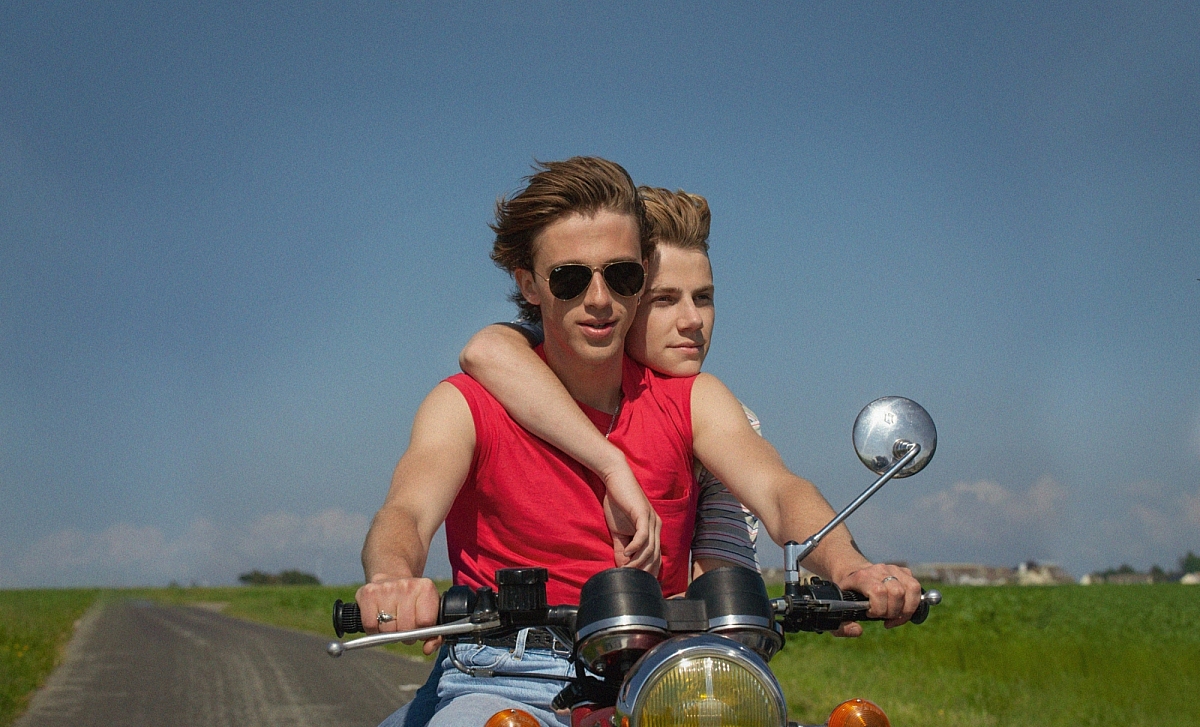
"Été 85" ©2020 Mandarin Production, Foz, France 2 Cinema, Playtime Production, Scope Pictures.
In Summer of 85 (Été 85), written and directed by acclaimed French filmmaker François Ozon, two teenage boys fall for each other and embark upon a passionate summer fling beside the sea, until terrible tragedy strikes. Summer of 85 is in cinemas and available to stream on Curzon Home Cinema.
To help transport audiences visually back in time to the mid-1980s, Ozon and his cinematographer, Hichame Alaouié SBC, opted to shoot the production on Kodak 16mm filmstocks, imbuing the visuals with what critics have hailed as a luscious and saturated evocation of both the period and the teenager's heightened emotions.
The film, whose soundtrack includes many foot-tapping pop classics from the era, was originally set to premiere at the Cannes Film Festival in May 2020. However, due to the cancellation of that event due to the Covid-19 pandemic, it debuted in France on 14 July 2020, before screening at the 2020 Toronto International Film Festival and having a wider release across Europe and the US.
The multi award-winning Ozon is regarded as one of the most important film directors in the new "New Wave" in French cinema, especially those associated with ‘Cinema of the body/Cinema du corps’. His films are typically characterised by sharp satirical wit and questions about human sexuality. He achieved international standing for his early films, such as the dark comedy musical 8 Femmes (2002, DP Jeanne Lapoirie) and the erotic thriller Swimming Pool (2003 DP Yorick Le Saux AFC).
Ozon’s latest film, Summer of 85 is based on the British 1982 young adult novel "Dance on My Grave" by Aidan Chambers. The director’s adaptation transposes the story to Northern France with the action focusing on Alex (Félix Lefebvre), a death-obsessed 16-year-old in need of a buddy during the long hot summer vacation. While out boating, Alex accidentally capsizes his dingy, and is rescued by the self-assured and slightly older David (Benjamin Voisin). The two become friends and their bromance quickly blossoms into a passionate affair, as they scoot around on motorbike and sailing adventures.
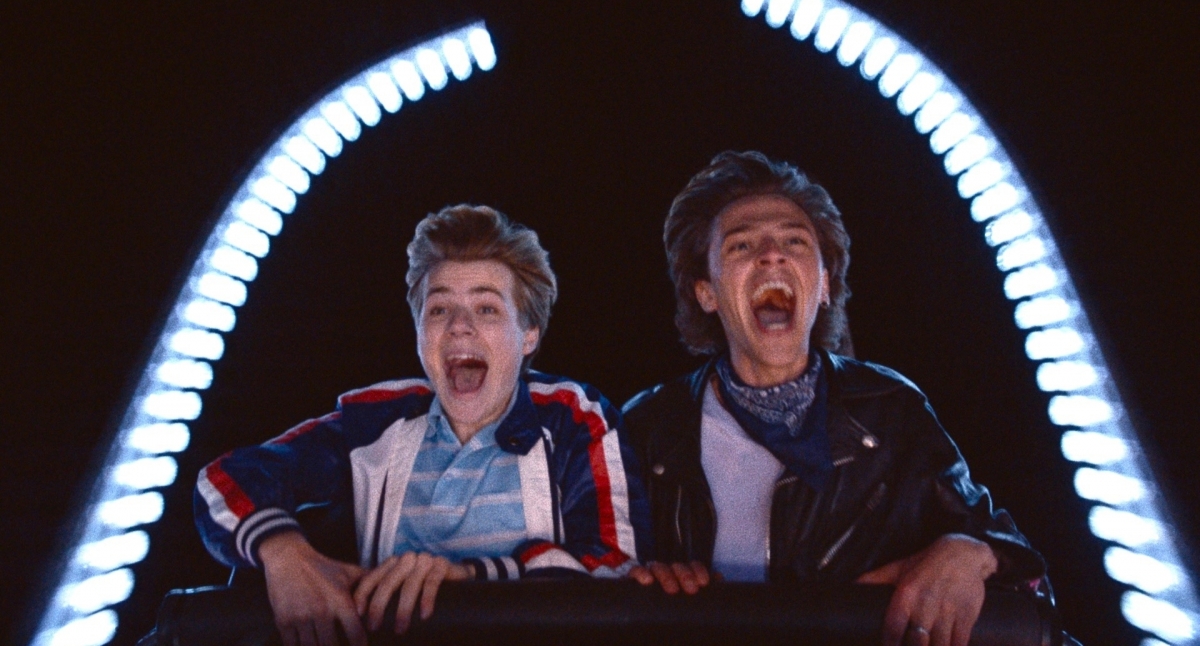
"Été 85" ©2020 Mandarin Production, Foz, France 2 Cinema, Playtime Production, Scope Pictures.
Filming on Summer of 85 took place over 33 shoot-days, during May and June 2019, at locations around Le Tréport, a small seaside resort and light industrial fishing port in the Seine-Maritime department on northern Normandy, France, and also at locations in the suburbs of Paris.
Recalling his initial conversations with Ozon about the visual aesthetics of the production Alaouié says, “This was a film about summer love by the sea – but distinctly marked by two different looks before and after the tragedy that occurs – the time before is sunny and colorful, the aftermath is more cold and stark as the dramatic disaster is gradually revealed.
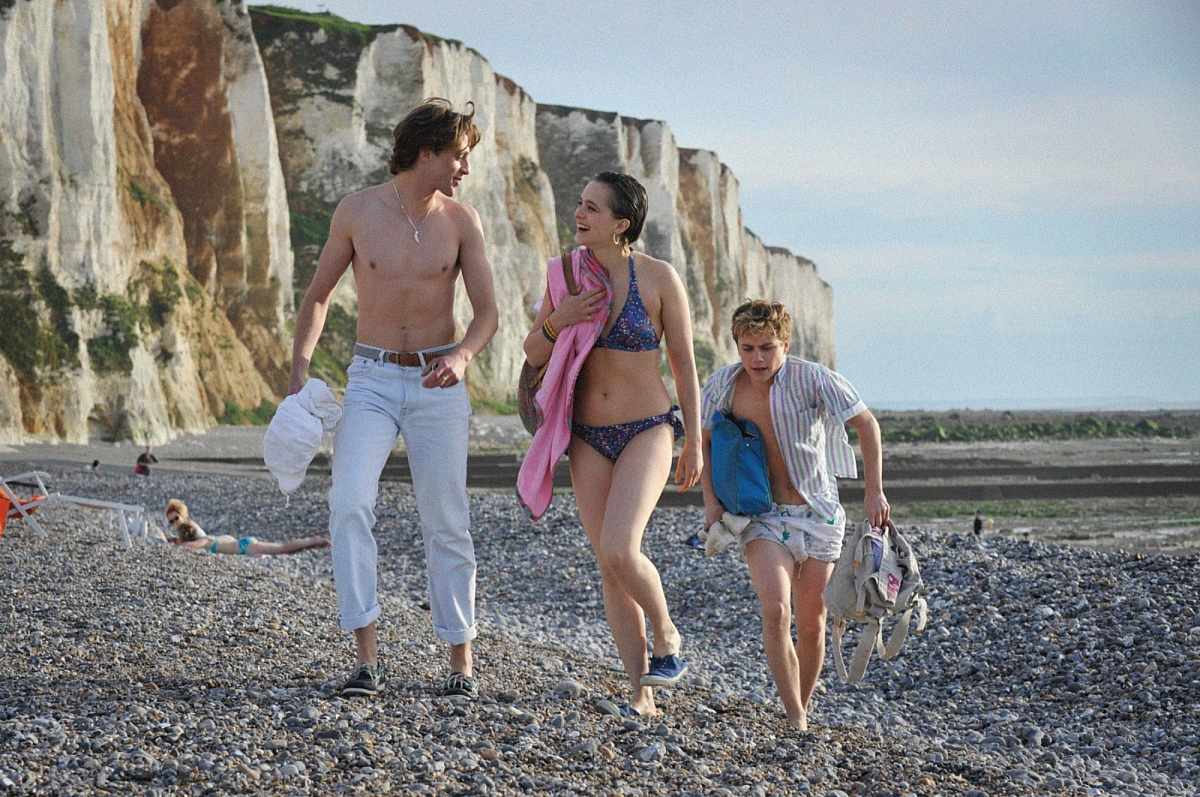
"Été 85" ©2020 Mandarin Production, Foz, France 2 Cinema, Playtime Production, Scope Pictures.
“Overall, François wanted the film to have the distinct look and feel of the 1980s, and he felt the best way to do that was to by shooting on celluloid film, although he was not sure whether it should be on 35mm or 16mm.”
Alaouié is a three-time winner of Belgium’s prestigious Magritte Awards for Best Cinematography on L'hiver Dernier/Last Winter (2011), Les Chevaux De Dieu/Gods Horses (2012) and Duelles/Mother’s Instinct (2018). Prior to working on Summer of 85, Alaouié shot De Nos Frères Blessés for director Hélier Cisterne, on 35mm film, but admits these latest pair of productions marked a return to celluloid after a nine-year absence.
“It was exhilarating to come back to shooting on film. It’s a kind of magic,” he says. “Because nobody can see the results immediately on set, just the video tap, everyone has to think more artfully and carefully about what they are doing than you would on a digital shoot. And that changes the dynamic on set in a very good way in terms of having everybody’s focused attention and discipline.
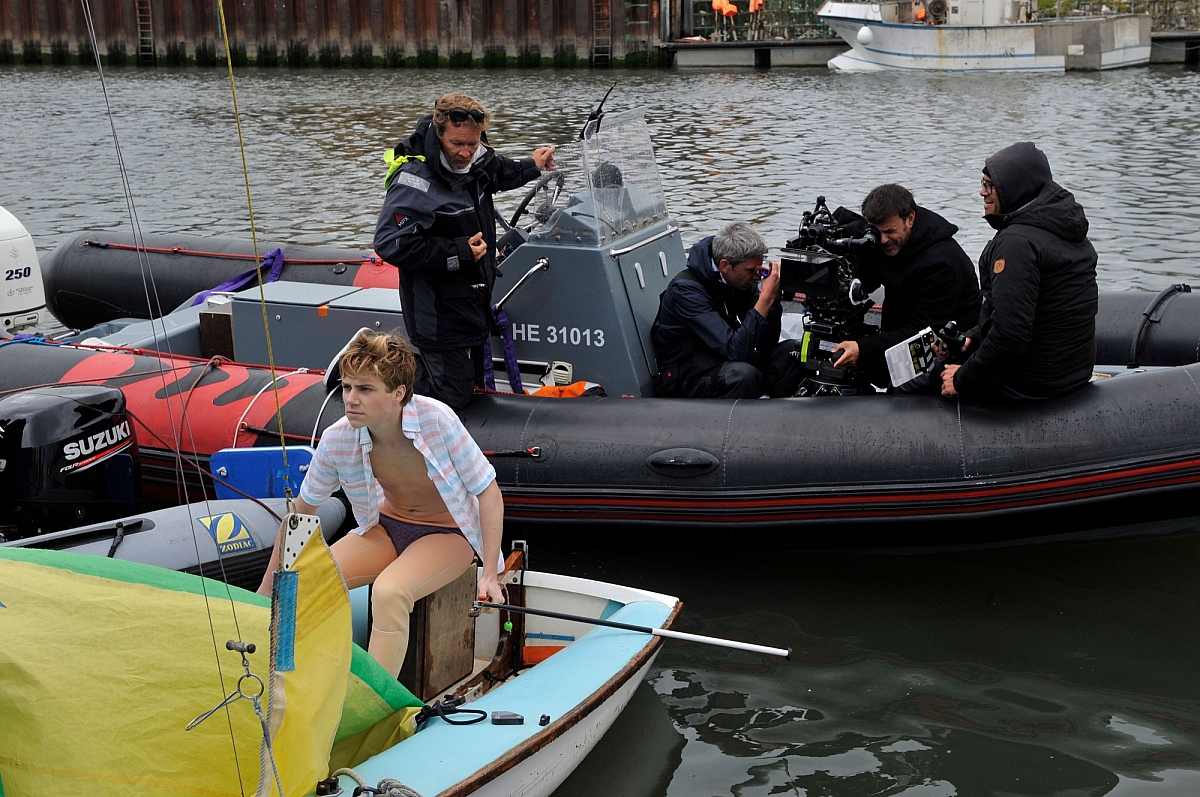
Director François Ozon at the 16mm camera during production on "Été 85" ("Summer Of 85").
“An additional and interesting proposition for me was that François likes to operate the camera himself on his films. So my work was very much focused on making it easy for him to move the camera around the actors and frame the action with the appropriate freedom and lighting.”
In consideration of the overall aesthetic of the film, Ozon and Alaouié looked at a range of photographs and other imagery from the 1980s era, and were also drawn to celluloid-originated films such as Roy Anderson’s A Swedish Love Story (1970, DP Jörgen Persson), and Gus Van Sant’s My Own Private Idaho (1991, DPs John J. Campbell/Eric Alan Edwards) for their respective sunny dispositions and sensuality of camerawork.
“Early on I proposed to François that we shoot on 35mm, but we also agreed to not rule out 16mm,” says Alaouié. “We shot tests of both film formats at our locations, variously pushing the look by one or two stops at the lab. Whilst the 35mm looked terrific, we found that we preferred the character of the grain in the normally-processed 16mm as part of our mission to re-live the 1980s.”
When it came to the type of emulsions, Alaouié tested Kodak daylight and Tungsten 16mm options, before selecting KODAK VISION3 200T Color Negative Film 7213 and KODAK VISION3 500T Color Negative Film 7219.
“Whilst the both types of the 16mm filmstocks looked colorful and represented the skin tones really nicely, the Tungsten emulsions gave us a dirtier and more characterful look. Overall, we felt that 16mm 200T and 500T, in combination with the costumes, location, set decoration and light really transported the look back in time best, and would help the audience to believe in the story.”
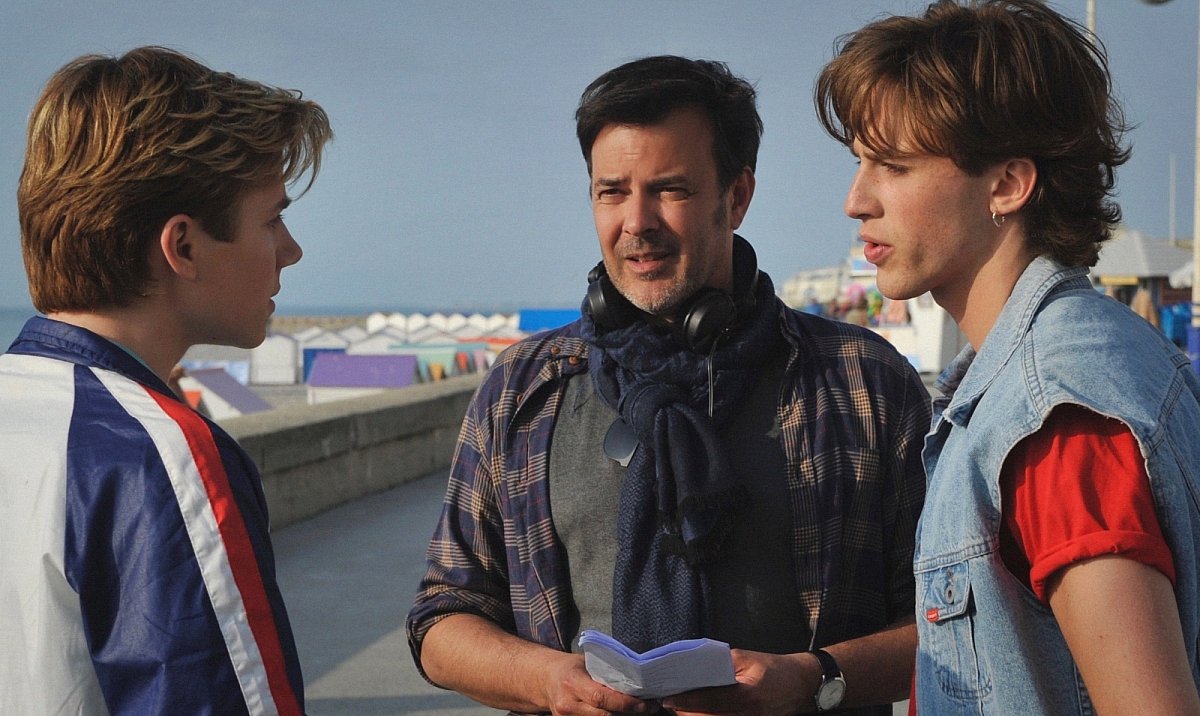
"Été 85" ©2020 Mandarin Production, Foz, France 2 Cinema, Playtime Production, Scope Pictures.
Supporting Ozon’s desire to operate the camera himself, Alaouié selected the small and portable ARRIFLEX 16SR3 as the main camera, with an Aaton XTR Pro as a second camera, which Alaouié operated as required.
Lenses used included spherical 19-90mm and 24-275mm Panavision Primo Zooms, plus an array of Primo primes for Steadicam and wide shots. The camera package was provided by TSF in Paris, with photochemical film processing and 2K scan done at Studio L’Equipe in Brussels.
“François always operates as much as possible himself, typically using zooms, as he likes the ability to frame the action according to his own sensibilities,” Alaouié explains. “He works in the moment and is quite improvisational with the camera – whether it’s a wide or a close-up, shooting handheld or on the dolly.”
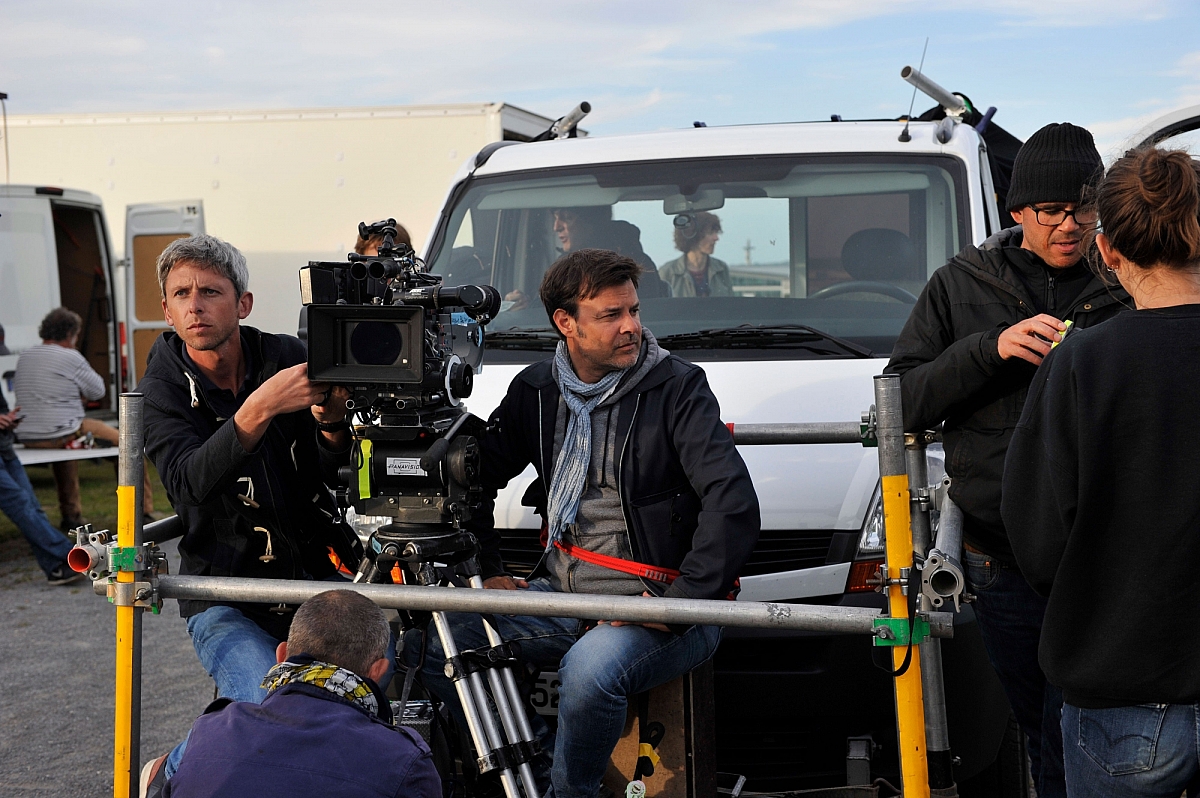
Director François Ozon at the 16mm camera during production on "Été 85" ("Summer Of 85").
Exterior scenes on Summer of 85 were shot chiefly in natural/available light, with reflectors used to direct and shape ambient light on the actors and their faces, particularly taking advantage of frequent golden hours. For interior scenes, lighting was typically directed in through windows from HMI sources, with a modicum of LED illumination to sculpt the actors, thereby giving Ozon the creative freedom he wanted with the camera.
To help distinguish between the two time periods in the story, Alaouié applied 85c correction for the sunnier love story sequences, typically shot on 500T. However, he used 81ef filtration in combination with 200T, along with differences in lighting, costume and décor, to deliver a colder, lower contrast and more austere aesthetic for the post-tragedy scenes.
“Of course, we could have made this film using digital, but it really would not have looked so genuinely authentic to the period,” he concludes. “Film automatically looks great – the skin tones look so natural, and the overall color rendition is superb – and faithfully records what is in front of the camera. On this production celluloid proved what a great time travelling device it can really be.”